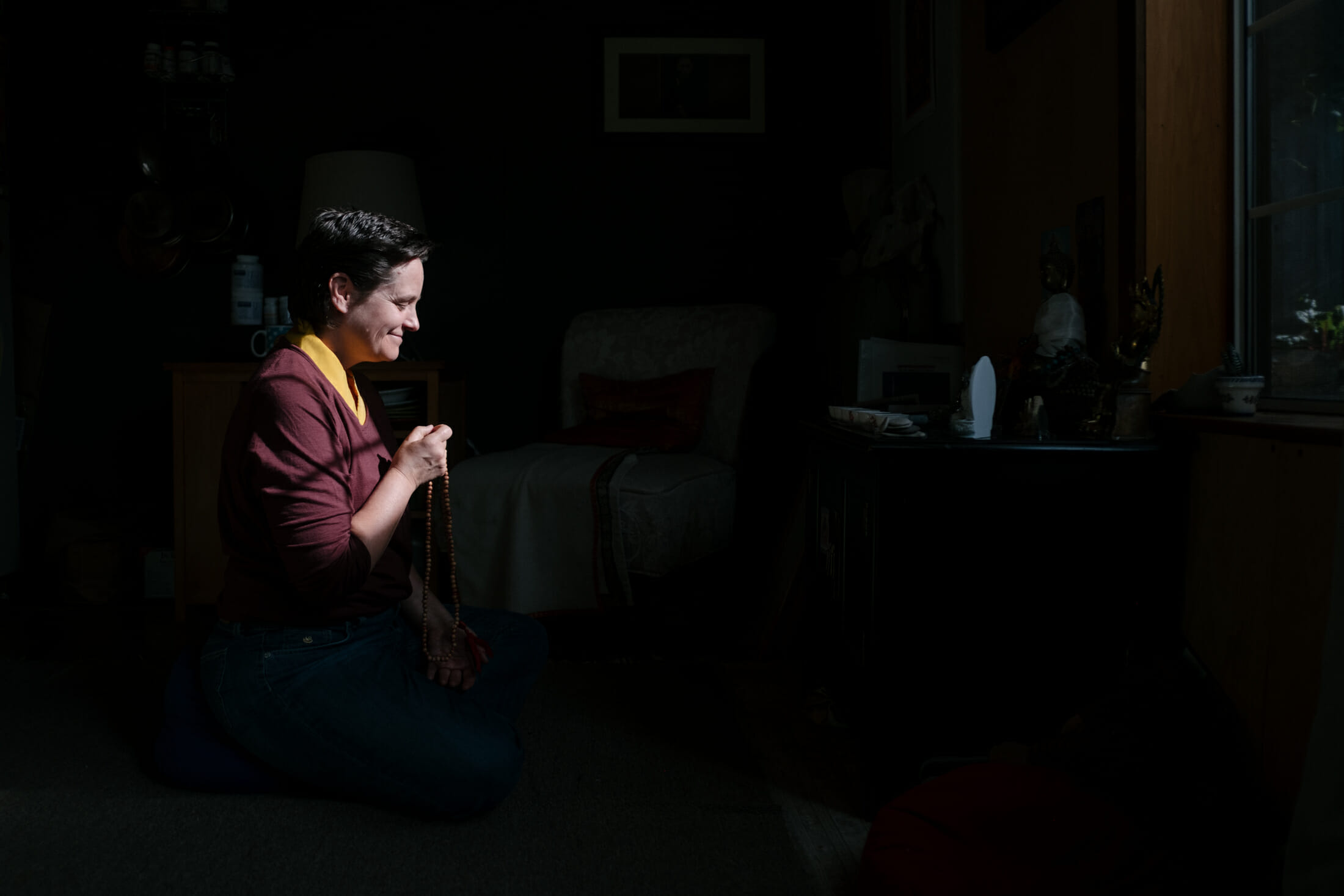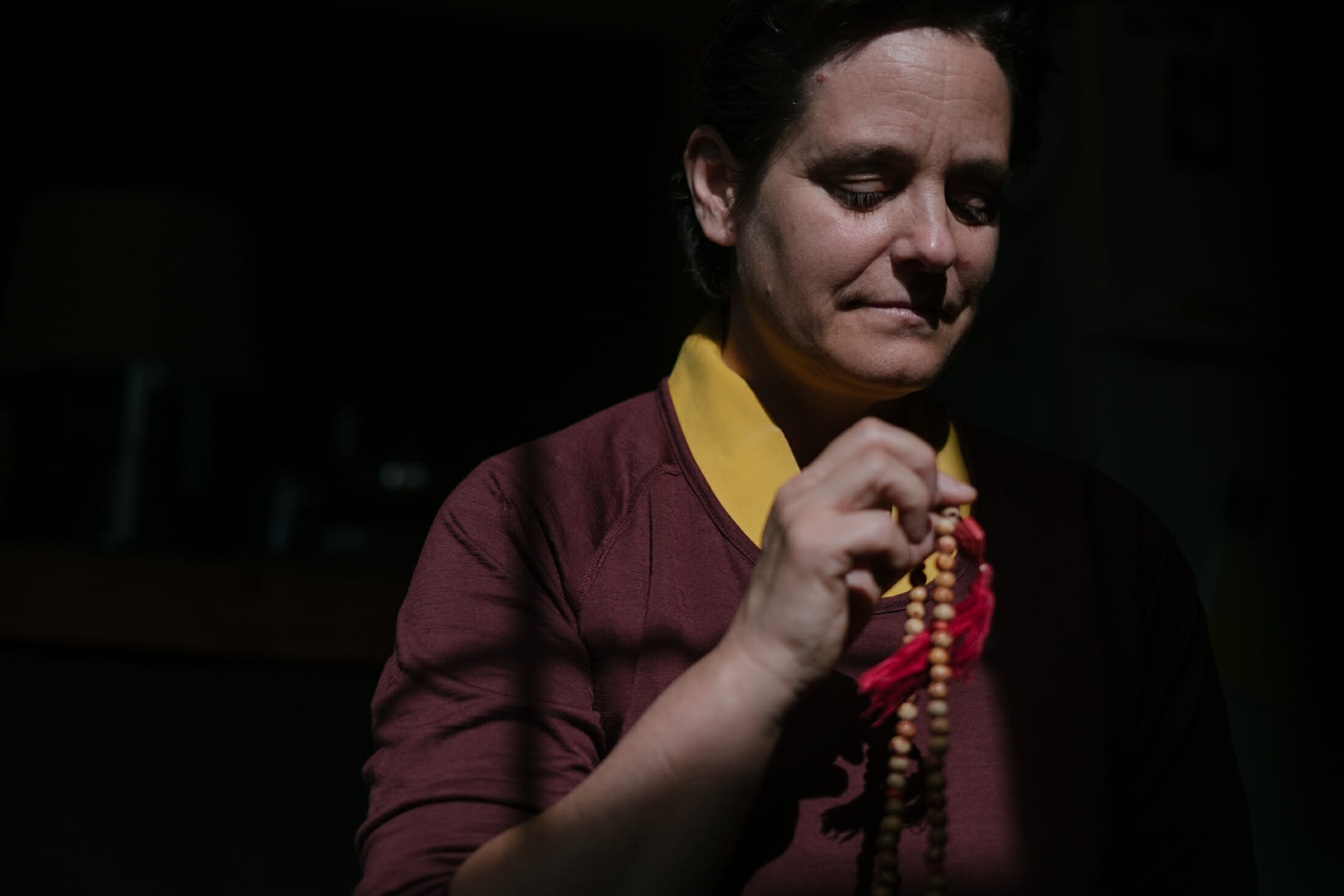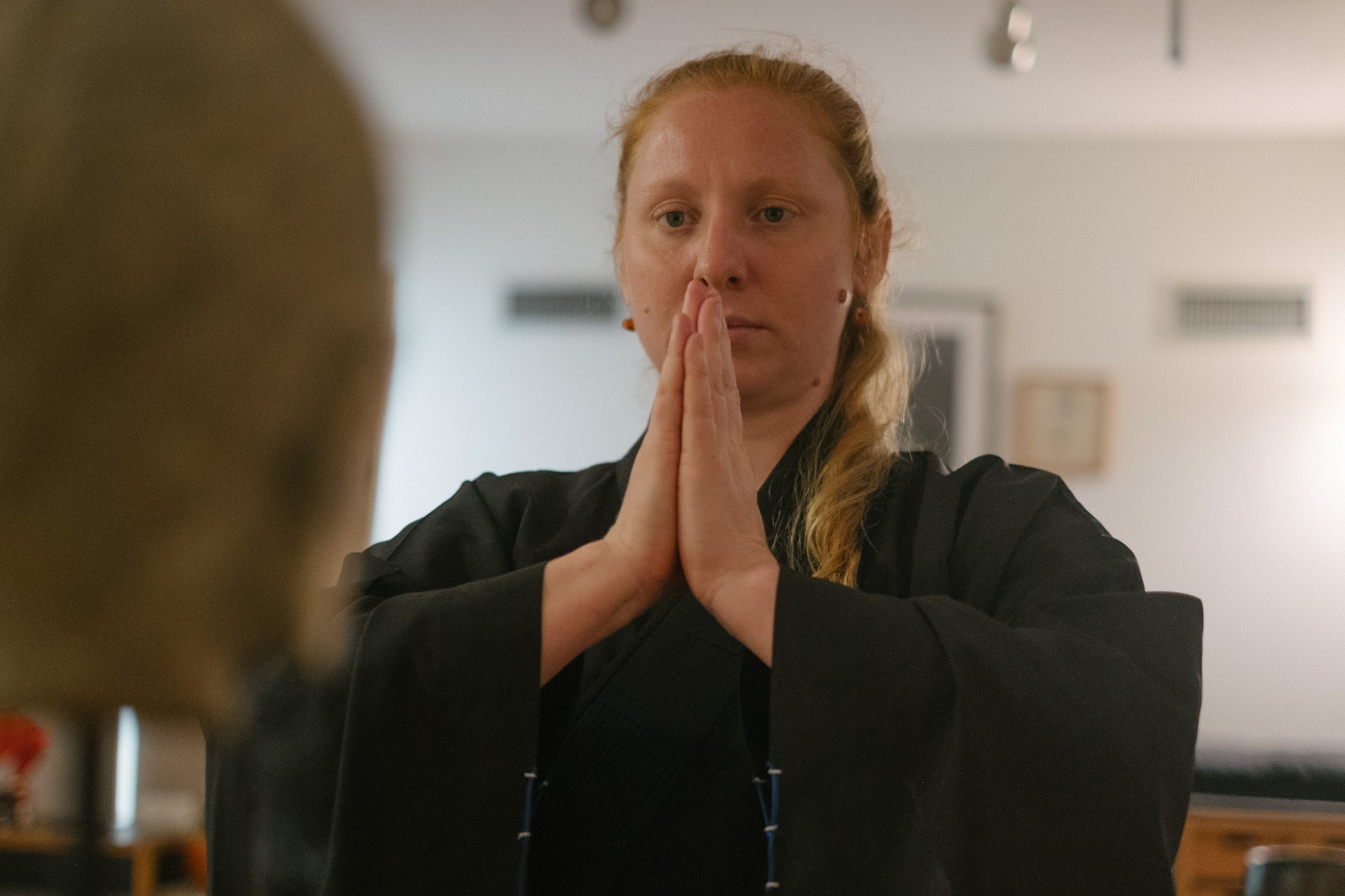Background
Shinchok, a woman with a strong sense of individuality, recounts her journey of spiritual exploration and personal growth. Raised in a Roman Catholic, Italian-American community in Springfield, Mass., she challenged conventions from a young age, such as being the first girl to wear a pantsuit for her first communion. Her curiosity and questioning nature led her to be expelled from catechism, but her spiritual journey continued.
In college, Shinchok explored Zen philosophy but found it too dry and restrictive. She then discovered the National Spiritualist Church, which dealt with topics like death and communicated with the spirit world. Intrigued by the experiences there, she delved into Zen, Hinduism, and spiritualism simultaneously.
Over ten years, Shinchok studied Zen, Hinduism, and the practices of mediums, finding a unique blend of understanding between the spirit world and various Eastern philosophies. She explored table-tipping, communicating with spirits, and delved into Tibetan Buddhism’s superstitions and practices.
As she reached the limits of her knowledge in Hinduism, Shinchok turned her attention to the Mahāmudrā, discovering that Buddhist teachings provided the answers she sought. Her desire for a genuine meditation master led her to a Buddhist center where she encountered the teachings of Jason Copper. Feeling a profound connection, she embraced Buddhism and its emphasis on devotion, recognizing it as a path to crack open her heart and discover her true self.
Refuge
Shinchok, drawn to the clarity of the Mahāmudrā books within a specific Tibetan tradition, felt a unique resonance, particularly with the emphasis on gender equality. Intrigued by the prospect of delving into her own mind and understanding its malleability, she sought teachings from the larger Lama leading the tradition. Her desire to explore tantric practices, rituals, and their transformative impact on the mind and life led her to commit to retreats and ordination.
In her pursuit of a deeper understanding of the mind, Shinchok believed that ordaining would eliminate distractions such as career and relationships, allowing her to focus solely on unraveling the mysteries of life. She envisioned ordination as a way to clear the metaphorical fog globe, providing a concentrated period to contemplate life’s purpose, the nature of her mind, and the choices available to shape her perspective on existence.
Life at center
In the span of six intense years, Shinchok immersed herself in a daily routine centered around Buddhist practices. Her mornings typically involved one to two hours of focused practice at the Buddhist center, where prayers and pujas were integral. Engaging with teachings, she occasionally took on a teaching role herself. Beyond personal practice, Shinchok actively contributed to the center’s activities, playing a role in marketing and advertising, and assisting as the education coordinator.
Contrary to her expectations, life at the Buddhist center went beyond a singular focus on Buddha and philosophy. Instead, it encompassed a holistic approach, intertwining meditation, prayers, and practical involvement in the center’s operations. Shinchok found joy in this multifaceted engagement. Her time was further enriched by participation in retreats, ranging from half a day to a month, providing her with cherished opportunities to delve deep into meditation and diligently train her mind.
Challenges
Shinchok reflects on the contrasting dynamics between Eastern and Western spiritual institutions, noting the deep cultural integration and lifestyle connection prevalent in the East. She acknowledges a certain skepticism and independence in the West, emphasizing the resistance to gurus due to past disappointments and lapses in moral discipline among some teachers. Shinchok highlights the challenge of transferring Eastern practices, such as Guru Yoga, to a Western context where trust in teachers is a significant hurdle.
Having experienced the cultural immersion in the East, Shinchok observes the distinct Western perspective on the teacher-student relationship. She notes the struggle in the West to define the role of a teacher, particularly finding those who embody the depth of meditation practices and can guide students effectively. Shinchok expresses a desire for meditation masters who authentically walk the talk, embodying the teachings without compromise. She emphasizes the scarcity of such teachers in the West and the challenge of locating individuals who have successfully translated Eastern cultural richness into meaningful experiences in the Western context.
Family Perception
Shinchok reflects on the challenges she faces within her family dynamics, recognizing their confusion and questioning regarding her unconventional path. Despite her family’s financial support for her college education, Shinchok feels a sense of isolation, opting not to force explanations or share extensively about her spiritual journey. While her family wants her happiness, there remains a disconnect due to the uniqueness of her pursuits.
Considering her ancestral background, Shinchok contemplates the expectations tied to the immigrant mentality of seeking a better life and education in America. Despite investing nearly a decade in higher education, she realized that conventional success did not bring lasting fulfillment. This realization led her to explore her inner happiness and the spiritual path, a pursuit that diverged significantly from her family’s expectations. Shinchok acknowledges the difficulty her family faces in comprehending her choices, especially as they were primarily exposed to the Catholic Church, and her unconventional desires for exploration, travel, and a different life trajectory.
Return to lay life
Shinchok contemplates the dual aspects of her spiritual journey— the inward focus of meditation and the outward application of Buddhist philosophy in the world. While meditation on the cushion allows her to delve into her thought patterns and develop her mind, she emphasizes the importance of taking the teachings into daily life. Off the cushion, in the world, she sees an opportunity to witness her actions and confront attachments, acknowledging the necessity of self-reflection with kindness.
For Shinchok, the challenge lies in extending the insights gained through years of meditation, retreats, and introspection into the realm of actions and experiences. She views this as a courageous step, recognizing the need to understand and improve her actions in order to impact the world positively. Embracing a philosophy centered on inner learning and expansion, Shinchok seeks to merge the benefits of meditation with the practical application of right thought and right action, aspiring to lead a meaningful life in both the contemplative and active realms.
Search Inside Yourself Institute
Feeling the need to extend her practice beyond meditation, Shinchok embarked on a journey that led her to the “Search Inside Yourself” program. This realization struck her after a coastal guiding experience in Maine. Walking through the Presidio, she encountered a group practicing meditation and engaged with them, discovering the program.
Having immersed herself in the program over the past year, Shinchok is on the verge of fully integrating her skills into its platform. She sees it as an opportunity to bridge her Buddhist philosophy with a secular approach, making the teachings more accessible and impactful for people. With a focus on emotional intelligence, neuroscience, and mindfulness, she aims to cultivate compassion as a learned state of mind rather than a spontaneous emotion. Excited about the potential to connect with others and help them discover their true selves beyond fleeting emotions, Shinchok is enthusiastic about her journey into secular meditation and its application in the broader world.
Teachers
Shinchok emphasizes the essence of a true teacher as someone who doesn’t dictate thoughts, actions, or emotions but guides individuals toward their true selves. In her perspective, Western challenges arise from a cultural inclination to seek external sources for happiness and stability rather than relying on inner strength. She observes a common misconception in the West, where people might mistake the tradition or the teacher as the source of true happiness, stability, and security.
Shinchok believes that the true strength lies in knowing oneself and cultivating compassion. She asserts that reliance on a tradition or a teacher can lead individuals away from the original teachings of humankind. For her, the authentic connection with a teacher is about self-giving, expressing gratitude from the heart, and breaking open into unbound love—a reflection of one’s own potential mirrored by the teacher. This intimate connection is rooted in the understanding that the teacher is not an external source but a guide reminding individuals of their inherent strength and potential.
Validation
Shinchok delves into her experiences with the National Spiritualist Church and fire walking, both of which expanded her understanding of spirituality. Fire walking, specifically, became a profound practice involving a rigorous 12 to 16-hour process of facing fears, processing emotions, and meditating. The fire itself, reaching temperatures of 1500 degrees, presented a formidable challenge. The practice demanded deep introspection as participants confronted their fears and anxieties, ultimately leading to a sense of empowerment.
Shinchok emphasizes the transformative nature of fire walking, not as a mere physical accomplishment but as a process of listening to one’s inner teacher. She recalls instances where a clear “no” to walking the fire bed was just as exhilarating as saying “yes,” highlighting the importance of listening to intuition and inner wisdom. This experience left her with a profound understanding of herself and her ability to navigate challenges, reinforcing the idea that accomplishments aren’t the sole focus—it’s about listening to one’s heart.
Drawing connections to her background in Zen Buddhist teachings and the convergence of neuroscience with Buddhist philosophy, Shinchok sees these experiences as affirmations of the mind’s potential. The outdoor adventures and tests of limits, including ocean kayaking, contributed to her trust in Buddhist teachings. Shinchok’s journey, intertwined with science and spirituality, solidified her belief in the philosophy and practices, shaping her ability to trust in their transformative power.















































































